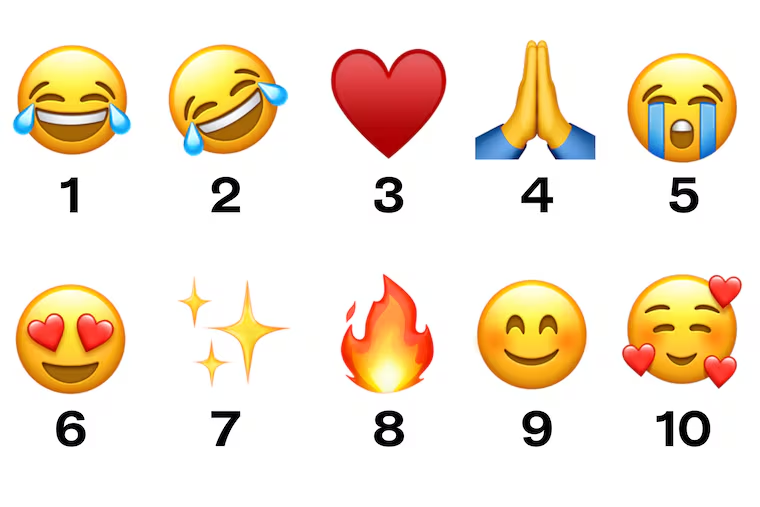What it looks (and feels) like when older people text the wrong emoji
Laughing emojis used to indicate bad medical news? It happens.

When Jackie Moore’s 74-year-old mother texted the news that someone she knew had a serious illness, Moore’s mother ended her message with the emoji of a yellow, tilted, open-mouthed face with tears streaming from its eyes.
To much of the world, that particular (🤣) emoji means “rolling on the floor laughing.”
Moore, 49, who’s self-employed and lives in Glenside, said she was at a loss: “I have no idea why she used it. Maybe she thinks the tears represent sadness. My mom texts nonstop but doesn’t know how emojis work.”
Moore’s mother, who didn’t want to be identified, isn’t alone.
A study released in mid-February in the journal Plos One indicates that older individuals are less likely to correctly interpret the intended meanings of some emojis than younger people.
Study subjects age 18 to 84 living in China and the United Kingdom were presented with a series of emojis, each representing one of six facial emotional expressions, across four commonly used platforms (Apple, Android, WeChat, and Windows). Their task was to choose from one of six labels — happy, sad, angry, surprised, fearful, disgusted — which emotion was represented by each emoji. Results showed that age had a significant impact on how emojis were classified by participants. The study also found that women were more likely to label emojis correctly than men.
Why do older folks tend to misuse emojis?
“It may not be that all older people don’t know how to use emojis,” said Asta Zelenkauskaite, a Drexel University communications professor who’s an expert in online writing and symbols. “It could be that many don’t care about all the expressive capacity of emojis as do young people, who have been online so much longer.
“Younger people dominate the discourse. And they shape meanings their way, whereas older people tend to take emojis literally.”
For example, emojis of some vegetables have developed sexual connotations, as interpreted by younger people. “For lots of older people, however,” Zelenkauskaite said, “they’re just vegetables.”
Online, older folks are more language-centered, while “younger people are being playful with symbols,” she added.
“They are superfluous and annoying and sophomoric,” noted Dan Roth, a local physician. “Now don’t get me started on QR codes. Get off my lawn.”
For Caroline Wong, 75, of Cherry Hill, a social work expert who’s a lecturer at the University of Pennsylvania, emojis can limit dialogue.
“It’s difficult enough to misread people in face-to-face conversations,” said Wong, who uses just a handful of emojis. “So, the fact that you’re trying to express emotion through an emoji gets us further away from understanding each other.”
An emoji experiment
In a small experiment conducted for The Inquirer, Generations on Line, a nonprofit in University City that provides digital skills for older Philadelphians, asked 45 seniors, ages 70 to 90, to guess the meanings of a handful of emojis. The respondents live in three facilities: Fountain View at Logan Square Continuing Care Retirement Community, Philadelphia Senior Center, and West Philadelphia Senior Community Centers.
The emojis included various faces that, according to Emojipedia, expressed love and adoration (a face with teeth and hearts over the eyes); being asleep (a face indicating closed eyes, an open mouth, and three zs); along with other symbols.
“Most understood the gist of all the emojis,” noted Tobey Dichter, Generations on Line CEO. “Though some [interpretations] were ... unconventional.”
As an example, the face with three zs was perceived by one older person as meaning, “I want to sleep with you.” Someone else stipulated (likely as a joke) that LOL (laugh out loud) really means “low on liquor.”
Overall, Dichter said, many of the folks used “language of a former era” to describe modern emojis, such as: “cutie pie,” “psyched,” and “oopsie daisy.”
‘A smile’s just a smile’
Around 10 billion emojis are sent every day worldwide, according to emoji experts.
There are currently around 3,800 individual emojis, according to Emojipedia, the reference website for Unicode Standard emojis. The standard is the universal character-encoding designed to support the worldwide display of texts.
That’s a huge amount of images to understand. And although Michael Schweisheimer, 52, a video director and producer from Germantown, isn’t a senior citizen, he has nevertheless experienced inter-generational trouble with emojis.
In his office, he’d end texts to a young assistant with a basic smiley face.
“One day,” Schweisheimer said, “she came up to me and asked if I was mad at her.” I asked her why.
“‘A smiley face is considered sarcastic,’ she said.”
“’It’s just a smile,’ I told her.”
“’No,’ she said. ‘It means you’re not pleased.’”
The woman later left the job and was replaced by someone closer to Schweisheimer’s age.
“We don’t have the same emoji miscommunication,” he said. “People of similar age know a smile’s just a smile.”
That’s not always true, according to Brandi Eyler, 39, an accountant from Glenside. Although she’s a millennial, she said, “I might be an 80-year-old in a younger body for messing up emoji meanings.”
Not long ago, she texted friends to organize a pub crawl. She ended her message with the advice, “Don’t forget to hydrate,” followed by an emoji she thought had expressed her suggestion.
The reaction came swiftly: “Oh, god, Brandi, don’t you know what this means?” asked a friend who explained the sexual subtext of what she’d sent.
“Younger people have evolved these emojis to represent other things,” Eyler said. “I really need a list of meanings.”
Ultimately, using emojis can be likened to fashion, Zelenkauskaite of Drexel said. “There’s always an in-group and an out-group.
“And as far as emojis go, adults may never understand them fully.”